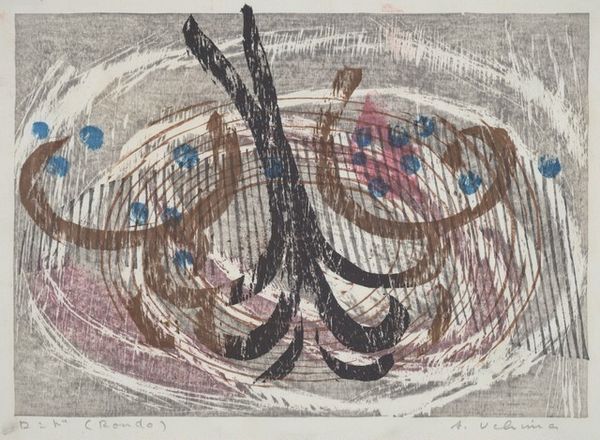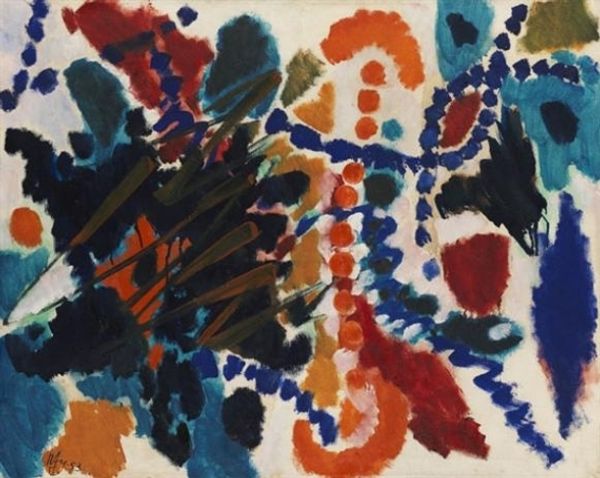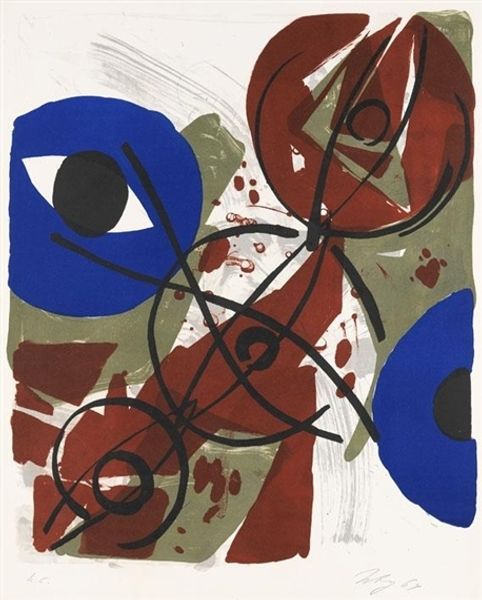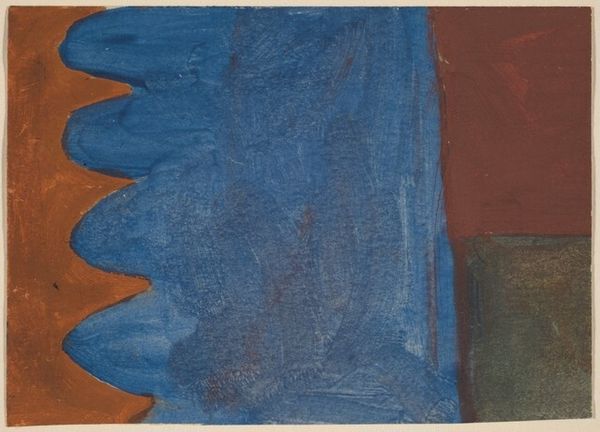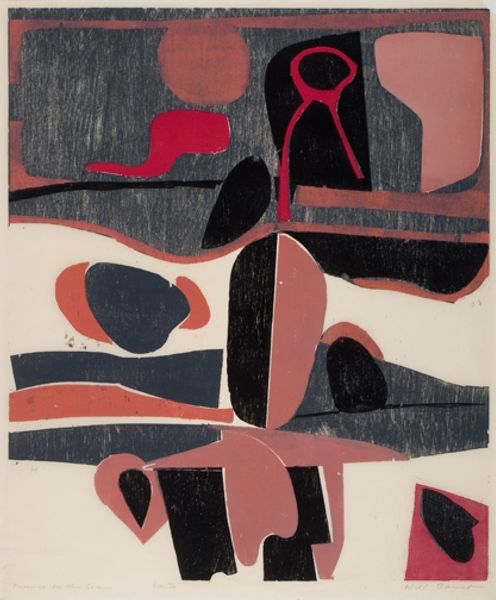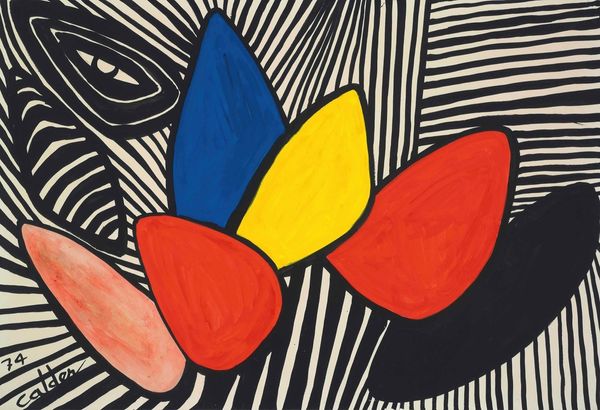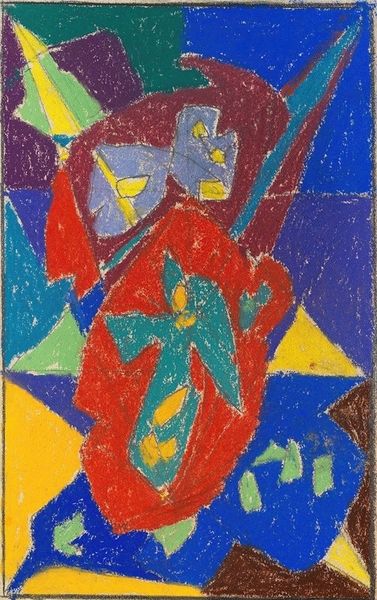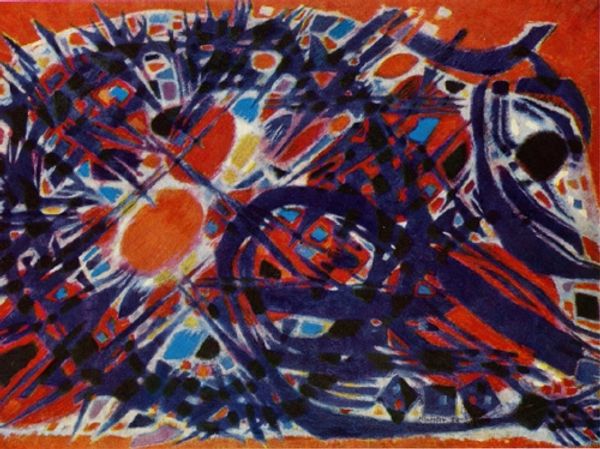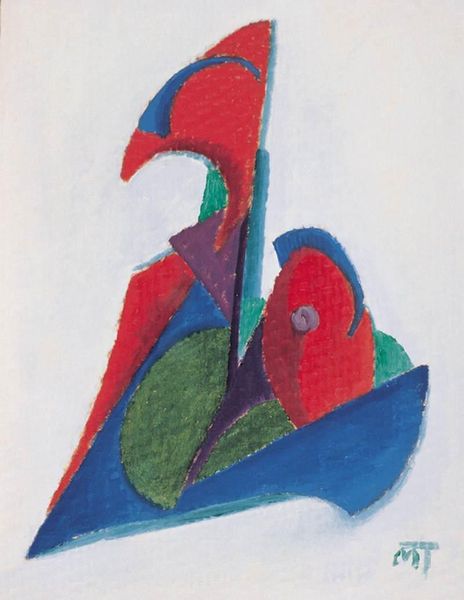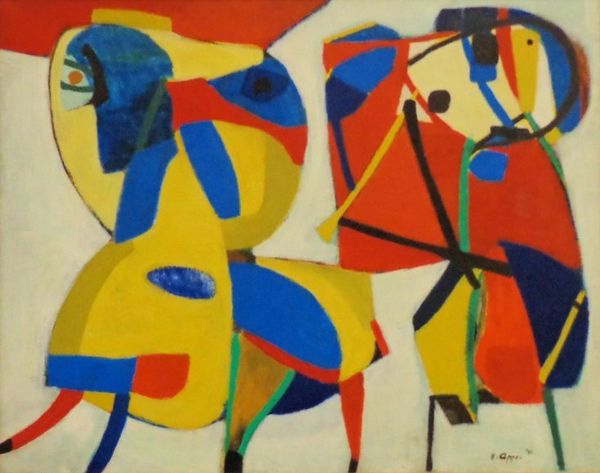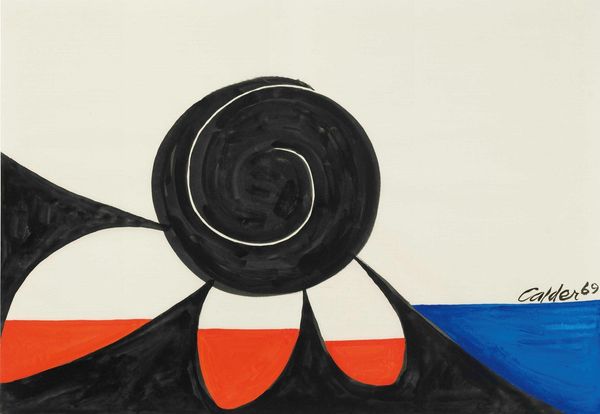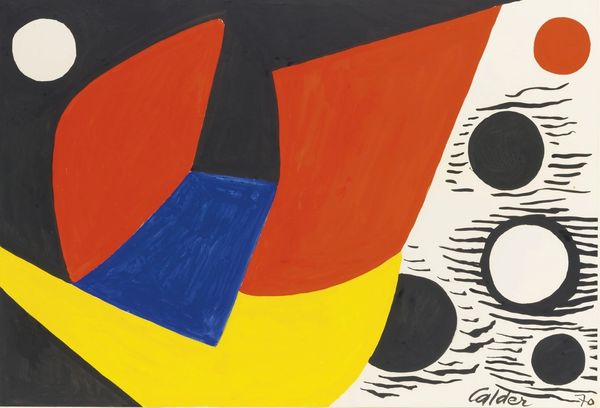
Replica of Fugue in Two Colors: Amorpha 1912
0:00
0:00
frantisekkupka
Museum of Modern Art (MoMA), New York City, NY, US
Dimensions: 22.9 x 23.4 cm
Copyright: Public domain US
Frantisek Kupka created this watercolor painting, ‘Replica of Fugue in Two Colors: Amorpha’ in 1912. The composition of geometric shapes and vibrant colors points to some prevailing concepts of Modernism. Made in France, the work aligns with the broader move towards abstraction that characterized the pre-World War I period, and a challenge to academic painting. The title invokes music, perhaps pointing to a desire to escape representation and express pure feeling. Kupka was linked to groups like the Section d’Or, in France, but also associated with developments in his native Czech lands. How were notions of national and cultural identity being expressed across different sites in Europe at this time? Historians investigate the significance of abstraction by looking at contemporary journals, exhibition reviews, and the biographies of artists. Kupka himself had strong views on art’s ability to reach beyond the material world. We can ask – how was he able to give those ideas visual form?
Comments
No comments
Be the first to comment and join the conversation on the ultimate creative platform.
